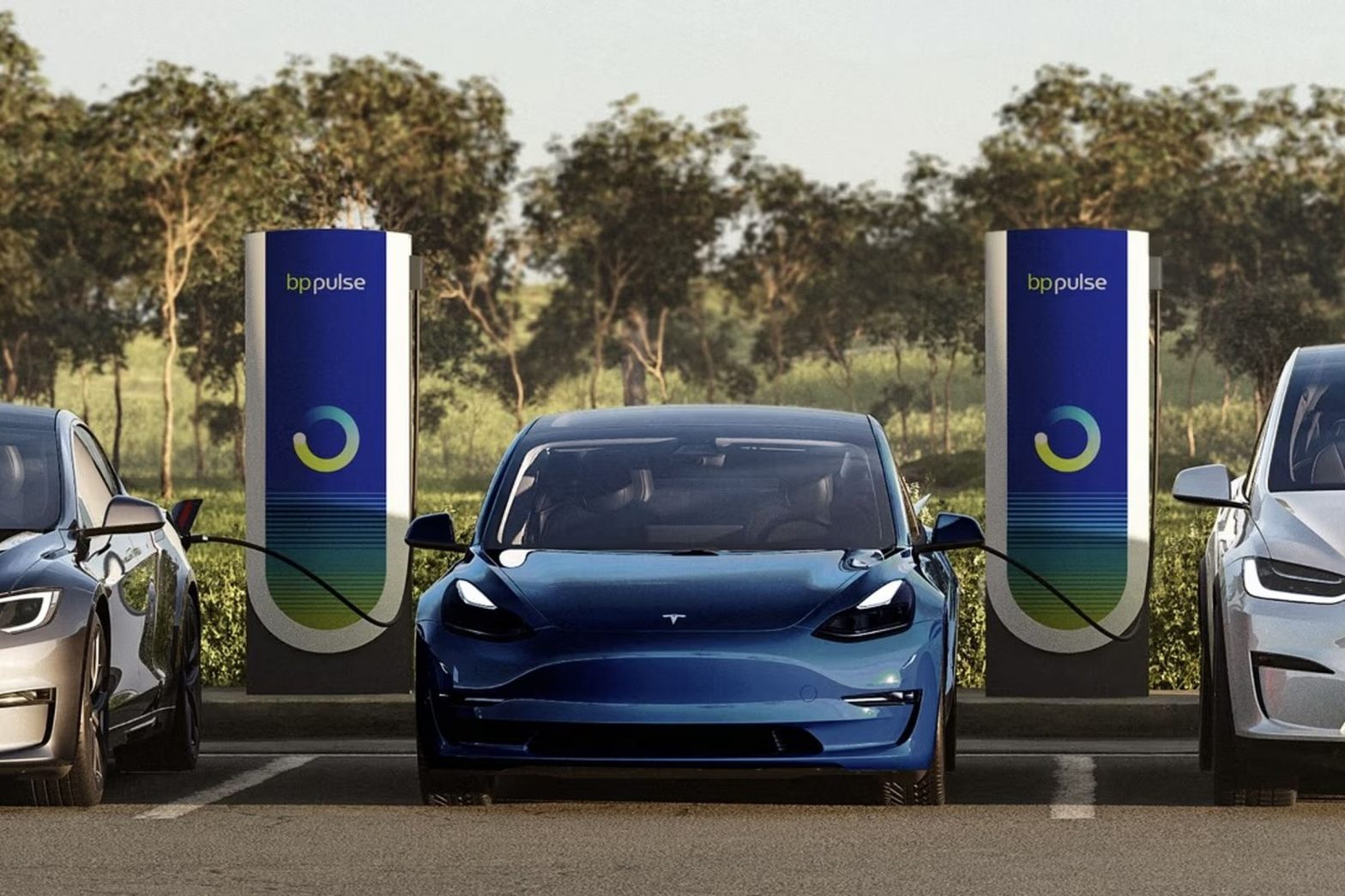/
The oil and gas company’s EV charging arm will be the first independent network with its own Superchargers.
Share this story
:format(webp)/cdn.vox-cdn.com/uploads/chorus_asset/file/25034842/bp_pulse_tesla_chargers.png.img.1280.medium.png.jpeg)
BP is buying $100 million of Supercharger hardware from Tesla, making it the first company to purchase DC fast-charging equipment from the automaker for use in a third-party charging network. The sale is going to the oil and gas conglomerate’s EV charging business known as BP Pulse, which plans to invest up to $1 billion in building a nationwide charging network by 2030, including $500 million over the next two to three years.
Tesla’s equipment can charge at up to 250kW and features a Magic Dock connector to connect using the standardized North American Charging Standard (NACS) plug from Tesla or a CCS Combo attachment that supports most other EVs. The press release doesn’t mention whether the deal covers Tesla’s updated V4 Superchargers, which are only just starting to roll out in the US.
BP Pulse plans to start installing the new chargers next year at businesses under the BP family of brands, like TravelCenters of America, Thorntons, Ampm, Amoco, its upcoming “Gigahub” charging sites, and third-party locations like Hertz rental car sites. The first deployment locations on the list will include Houston, Phoenix, Los Angeles, Chicago, and Washington, DC.
BP Pulse has installed more than 27,000 charging stalls in total and says it plans to erect more than 100,000 worldwide by 2030. Previously, the company had purchased charging equipment from Tritium, including ones that can charge up to 50kW or 150kW.
BP’s version of the Tesla Superchargers will run on software called Omega, which is different from the automaker’s system. Omega can oversee charging for fleet operators like Hertz and supports a Plug-and-Charge protocol by not requiring a card tap or app activation. EV drivers can just plug in, and it will automatically charge their account for the electricity.
